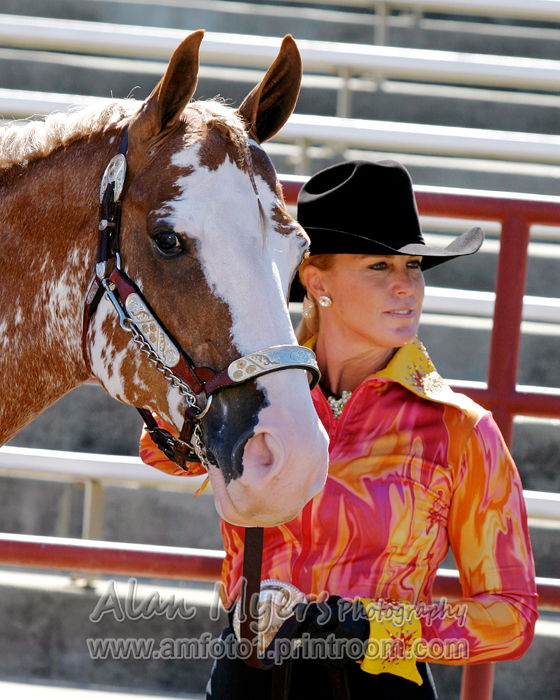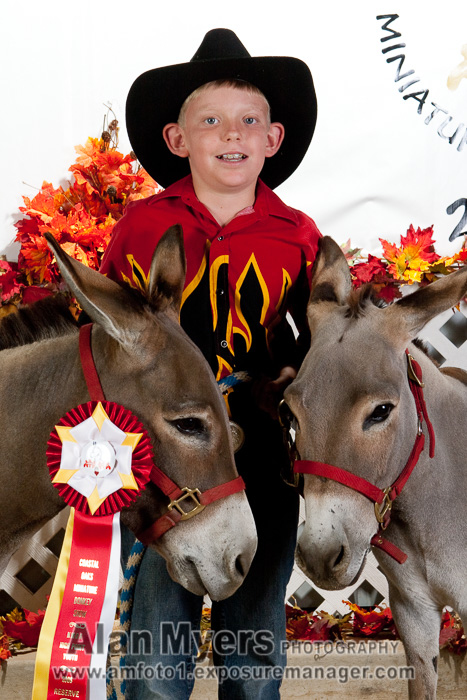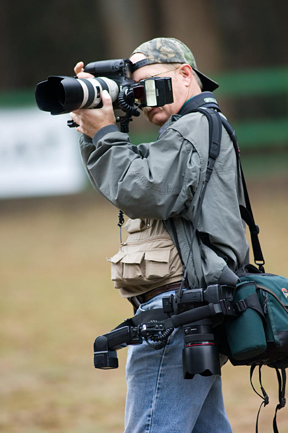For fill flash, what lenses are best for a good photo?
Jan 1, 2020 11:39:33 #
Use the little white piece what you pull out what is built in in most flash heads....for more exposure under the hat
Jan 1, 2020 12:55:53 #
Jan 1, 2020 13:24:18 #
Jan 1, 2020 13:37:40 #
tonyantony wrote:
window light, no flash
window light, no flash
On amazon you can buy windows that
roll up and stuff into your camera bag.
Jan 1, 2020 13:38:37 #
ballsafire wrote:
For FP Flash (fill-flash portrait) using high-speed-sync to get rid of shadows under the eyes or under a hat in sunlight what lens would you use or recommend? I use a crop sensor Canon Rebel and a ful frame Canon 5D classic body. Please make your answer as simple to understand as possible, thanks in advance.
The lenses don't have a thing to do with the flash, just use the lenses you always use, if you don't like them, get better ones! You can use flash any which way with any lens!
Jan 1, 2020 15:00:36 #
ballsafire wrote:
For FP Flash (fill-flash portrait) using high-speed-sync to get rid of shadows under the eyes or under a hat in sunlight what lens would you use or recommend? I use a crop sensor Canon Rebel and a ful frame Canon 5D classic body. Please make your answer as simple to understand as possible, thanks in advance.
I'm a candid shooter of my grandchildren & love to use my 50MM f/1.8 prime with & without a flash on my C-Crop Nikon D7100. For group shots I use my 18-140MM Nikon DX Lens. I know what you are trying to do by using HSS....soften the light. Please look over the techniques shown for bouncing light. Neil's books & techniques are excellent. My goal is for someone to ask "Did you use a flash?", like it never even happened. I use "The Black Foamie Thing" when I have walls & ceilings to bounce from and "The Better Bounce Card"--large when I don't. I use a Nikon SB700 on camera flash.
https://neilvn.com/tangents/best-fill-flash-settings/
https://neilvn.com/tangents/about/black-foamie-thing/
https://petergregg.com/a-better-bounce-card-flash-diffuser/
I hope this helps!
Jan 1, 2020 20:44:17 #
I recently received a photo of a couple taken with a cell phone against the sun. Their fronts were in shade while the background was bright. Post processing provided a fill flash ability. Saved the picture.
Jan 2, 2020 16:01:53 #
amfoto1
Loc: San Jose, Calif. USA
ballsafire wrote:
For FP Flash (fill-flash portrait) using high-speed-sync to get rid of shadows under the eyes or under a hat in sunlight what lens would you use or recommend? I use a crop sensor Canon Rebel and a ful frame Canon 5D classic body. Please make your answer as simple to understand as possible, thanks in advance.
Whether you use flash or not is largely irrelevant to lens selection. Distance and the desired framing of the subject are bigger considerations for lens selection.
For portraiture such as you describe, I'd most often use an 85mm or 135mm lens on a full frame camera like your 5D. There would be instances when I'd instead use a wider 50mm or 35mm.... or situations when a zoom like a 70-200mm would serve better (kids and pets, for example).
On your crop sensor Rebel, same idea but with the focal lengths adjusted.... 50mm and 85mm would be my primary choices. But there are times when I've used as wide as 28mm or zooms such as 28-135, 24-70 and 70-200mm.
When using flash, distance is a consideration... and that, in turn, might influence your choice of lens a bit, although I still think the first concern is getting the subject framing you want. The shorter focal lengths I mention above are good for full length portraits, couples and small groups... while the longer ones are for much tighter shots of individuals, head and shoulder portraits at a distance.
It also depends upon the flash you are using. First, I assume you are using an accessory flash... not one built into the camera (like the Rebel has, but the 5D doesn't). Built-in flashes are wimpy, are located in the worst possible place for redeye problems, are slow to recycle and draw heavily on the camera's battery. I avoid them. A good accessory flash is much more powerful, can be put on a bracket moving it higher up and off to the side for better effects and minimal redeye, typically recycles much faster and has it's own power supply.
Since you are using it for fill (not "full"), you can get quite a bit of distance with a powerful flash like Canon's 500-series and 600-series EX. The 300-series and 400-series won't have quite as much reach, but certainly can work well too. There are third party equivalents to all of these.
Using 500-series flash, I sometimes add a Flash Extender to it to be able to use very long telephotos (minimum 200mm on crop, 300mm on full frame) and get fill flash at significant distances.... 100 feet and more.
Using flash you have to watch out for reflections, including redeye but also off eyeglasses, jewelry, etc. Those can quickly ruing an otherwise great shot.
This was shot with a crop camera, Canon 550EX flash, EF 70-200mm lens (at 160mm and f/5.6)... ISO 100, 1/320 shutter speed (note: had to use "high speed sync" on the flash, to shoot at 1/320... HSS limits distance, but that wasn't any problem here).

It's an old trick to take portraits with your subject back lit, like above, so that they aren't squinting into bright sun, using fill flash this way.
Fill flash is very easily done with Canon cameras and flashes. Simply use one of the auto exposure modes (Av or Tv... usually Tv since you may want to control the shutter speed). This automatically causes the flash set to ETTL to fire as "fill"... The camera's metering system bases the exposure on ambient light conditions and the flash is fired at -1.66 stops reduced power (you can increase or decrease this easily using Flash Exposure Compensation either on the flash or in the camera's settings).
When you want "full flash" simply set the camera to fully manual mode (M without Auto ISO). In this case, the camera ignores ambient light conditions and bases exposure on the flash alone, which is fired as if it's the only source of illumination. (Depending upon your aperture, ISO and shutter speed settings you can control how much or how little ambient light is mixed into the shot.)
For comparison, below is a "full flash" shot using fully manual studio strobes (one large umbrella as main light on the left, second smaller one set at half power on the on the right as fill... I don't recall, but think the background was simply lit by ambient light... this was inside a very large barn w/interior mostly painted white and with more windows and skylights than most barns). Crop camera fully manual settings, ISO 125 and 1/160 shutter speed, 24-70mm lens at 58mm and f/11.

It's difficult to see in these Internet size and resolution images, but one benefit of using fill flash for portraits is that it usually makes for a nice "catch light" in the subject's eye. This is a "good reflection" that makes them look "alive".
In fact, I use flash far more often outdoors in broad daylight, than I use it in low light and indoors. Below is me at an event (photo by a friend, used with permission), shooting with 24-70 on one camera, 70-200 on the other, both with fill flash... Image on the right is one I made that day, although I'd switched to a 300mm lens (at f/2.8, ISO 200, 1/640 shutter speed, HSS). You can see how "gently and lightly" fill flash was applied (this is a proof quality version.... for the fully "finished" version of the shot I Photoshopped out the horse and people in the background, behind the fence).


There are other flash techniques that can be used, such as "dragging the shutter with rear curtain sync" to capture some motion blur with a moving subject. This is essentially the opposite of the above, where I was using faster shutter speeds to prevent any camera shake blur or subject motion blur. For the shot below, I slowed the shutter to 1/30 (ISO 400, 24-70 at 52mm, f/7.1). The flash was set to second curtain sync, to insure the "ghost blurs" looked like they were behind the subject. With standard shutter curtain sync, they appear in front of the subject, as if they are moving backwards. That looks strange!
Today with higher ISO capable cameras that have greater dynamic range, I use fill flash a lot less often. It doesn't happen often, but sometimes horses (which I photograph a lot) react poorly to flash (more typically, it's inexperienced riders that get upset by it... the horses mostly ignore it
 ). When working without flash I shoot for proper exposure of the subject, then recover the background in post-processing, if needed. Here's an example where I didn't use flash....
). When working without flash I shoot for proper exposure of the subject, then recover the background in post-processing, if needed. Here's an example where I didn't use flash....
This is a rather extreme situation, with the subject indoors and in cool colored shade, in front of a stongly sunlit background. I exposed primarily for the subject, then "double processed" the image to recover the background. On the left is the image pretty much "as shot" for the indoor subject with the background largely blown out, while on the right is the version adjusted for both exposure and color temperature for the background.


Those two versions of the image were then combined in Photoshop, using layers & masks, to produce the above finished image. (In fact, I overdid the background recovery a little and thought it was too strong when I combined them... so I increased it's transparency a little to tone it down. Overall, this image is deliberately slightly saturated due to the printing method that was going to be used with it.)
Jan 2, 2020 17:01:08 #
amfoto1 wrote:
Whether you use flash or not is largely irrelevant... (show quote)
ALAN! These are great examples of flash fill, especially when you can't move the subject into ideal lighting or when you have little of no control due to the existing weather conditions, time of day, or the geography venue. This is quite often the condition in these equestrian and many other sports coverages.
As a portrait photographer, I would not choose to shoot an environmental portrait sitting at high noon in direct sunlight, however, as a former press photographer, and a present wedding and industrial shooter, oftentimes I have no choice. Typically, at many weddings, the couple ascends the church steps at high noon, with the sun shining brightly on beautiful June day- just what the couple ordered. There are many great shots to be captured- hugging and kissing, back-slapping, rice or confetti flying and more except the shadows are black as tar and running form the eye sockets, noses, and lips- right down to people's' chests! Flash to the rescue! Not ideal "portrait" lighting but the shadows become transparent, the detail comes through and the shots still have the feeling of a perfect day.
No time to fuss with exposure calculation or the action will be missed so I use a very uncomplicated method- the dirty old f/16 rule and my flash set at a stop or 2 lower- say f/11. If the sun starts to kinda recede around 1 or 2 o'clock and I can backlight and fill with the flash at f/11- that works too. I usually work these shots with normal and moderately wide focal lengths and if I need to use a telephoto focal length or stand at a distance for a wide shot, all I need to do is power up the strobe. The good thing is that I have very little workflow issues and can print out most files with minimal post-processing. Imagine having to mess with dozens of shots of a garden reception that runs for 12 to 5 o'clock on a bright day. Even hazy, cloudy/bright, and overcast days can be problematic when the lighting direction is directly overhead.
There is sometimes a misconception that fill- flash eliminates shadows where in reality, it just modifies them. You can, however, overpower the daylight by exposing for the flash and using a high enough shutter speed to omit most or all of the daylight. With an on-camera flash, this approach creates a flat unnatural lighting or a day-for-night effect where the background will go unnaturally dark.
Jan 3, 2020 10:53:24 #
What are the extra steps that one has to take with a focal plane shutter.
I have always found synchro-sun easier with a between lens shutter (Compur type) but the situation is very different for a focal focal plane shutter at speeds above the sync speed when both curtains are not fully open.
Was not the old advice to set the aperture based on the guide number of the flash unit and thus the distance to the subject, adjust the aperture so that the fill light exposure will be less than the one for ambient light by closing the aperture by say 1/2 stop and then set the shutter speed to give the correct exposure for the ambient lighting.The aperture controlled the fill lighting and the shutter speed the ambient lighting.
I have always found synchro-sun easier with a between lens shutter (Compur type) but the situation is very different for a focal focal plane shutter at speeds above the sync speed when both curtains are not fully open.
Was not the old advice to set the aperture based on the guide number of the flash unit and thus the distance to the subject, adjust the aperture so that the fill light exposure will be less than the one for ambient light by closing the aperture by say 1/2 stop and then set the shutter speed to give the correct exposure for the ambient lighting.The aperture controlled the fill lighting and the shutter speed the ambient lighting.
Jan 3, 2020 12:32:58 #
amfoto1 wrote:
Whether you use flash or not is largely irrelevant... (show quote)
Quoting from the OP:
"Please make your answer as
simple to understand as possible,
thanks in advance."
-

If you want to reply, then register here. Registration is free and your account is created instantly, so you can post right away.


